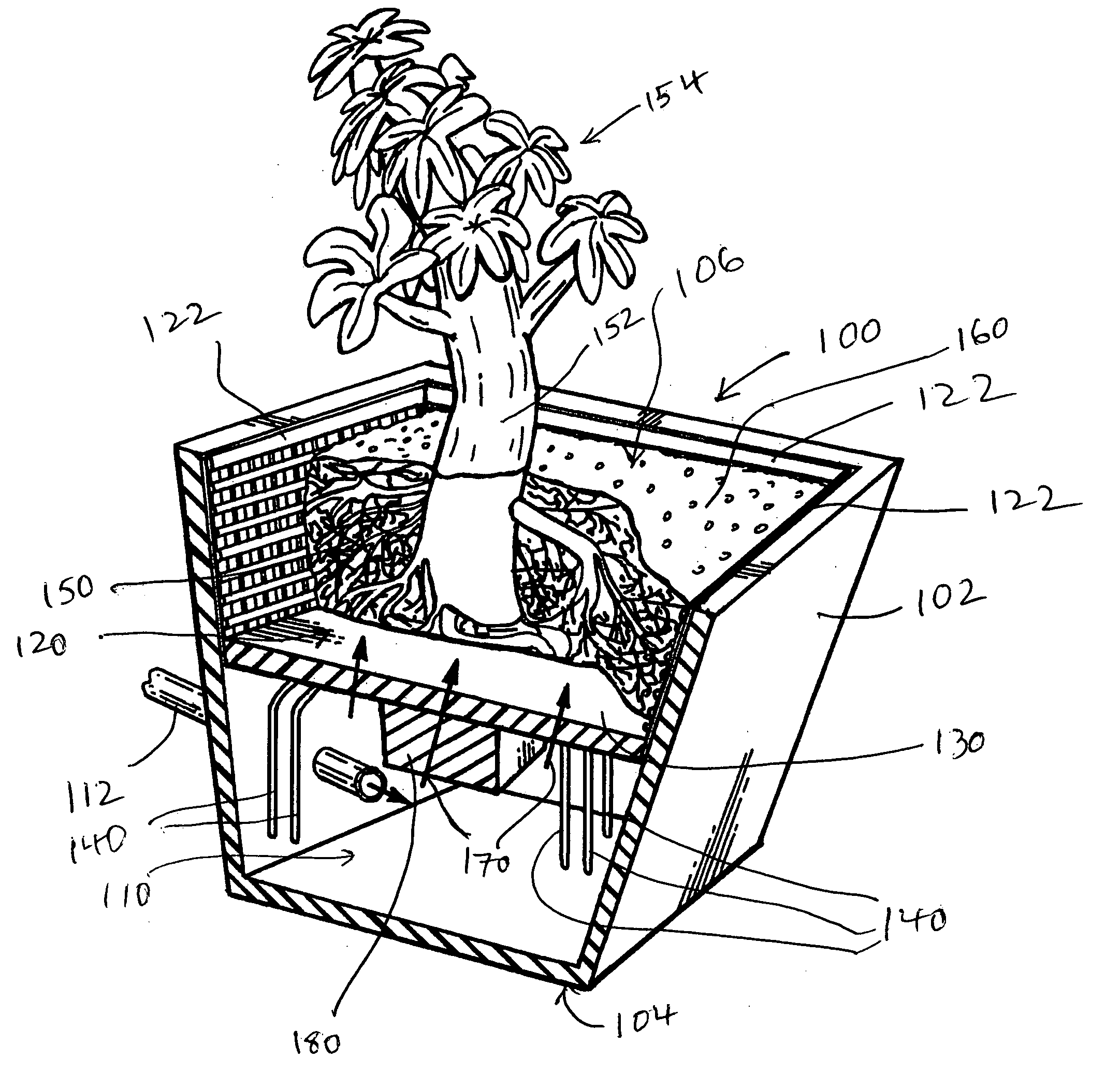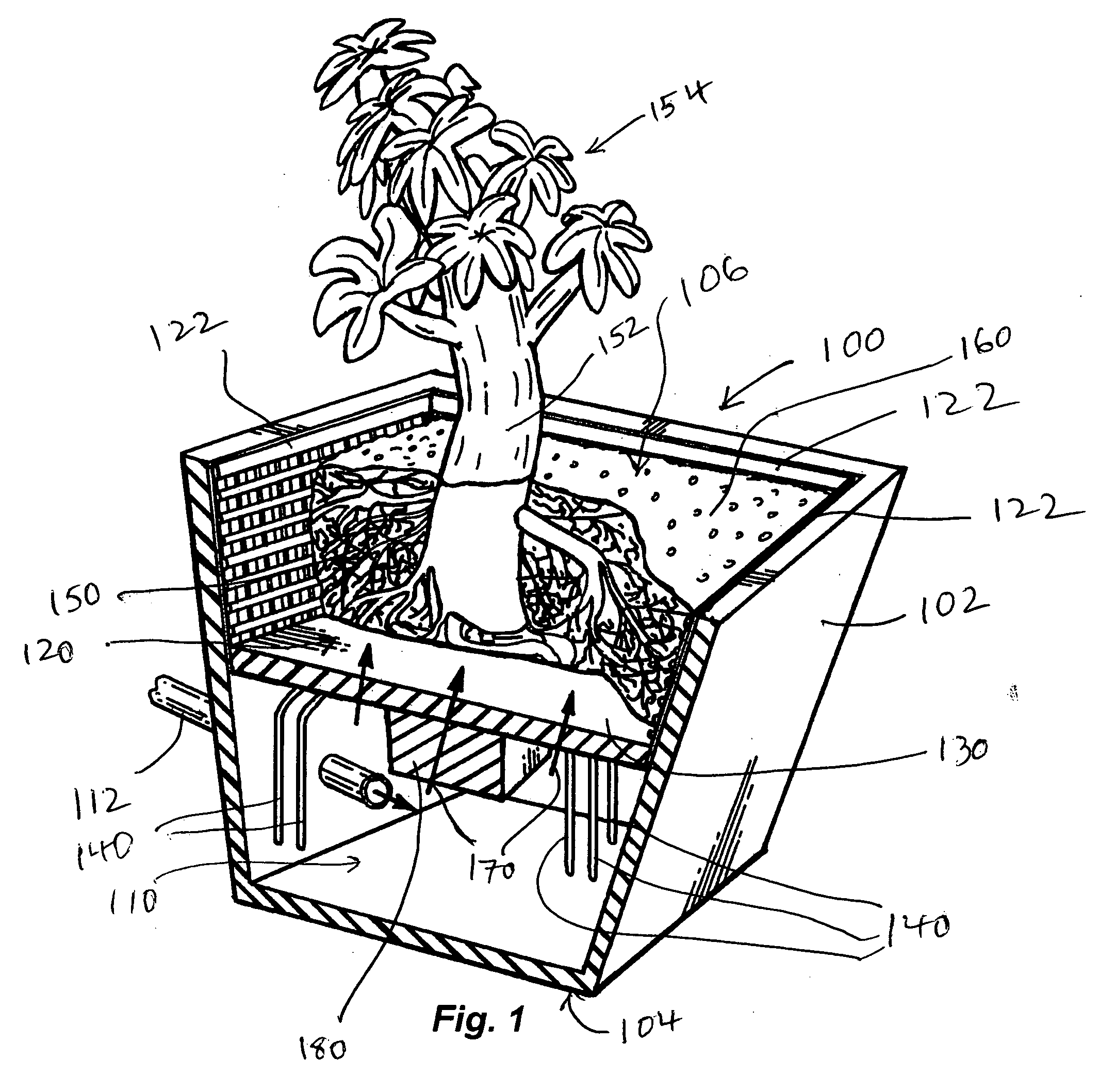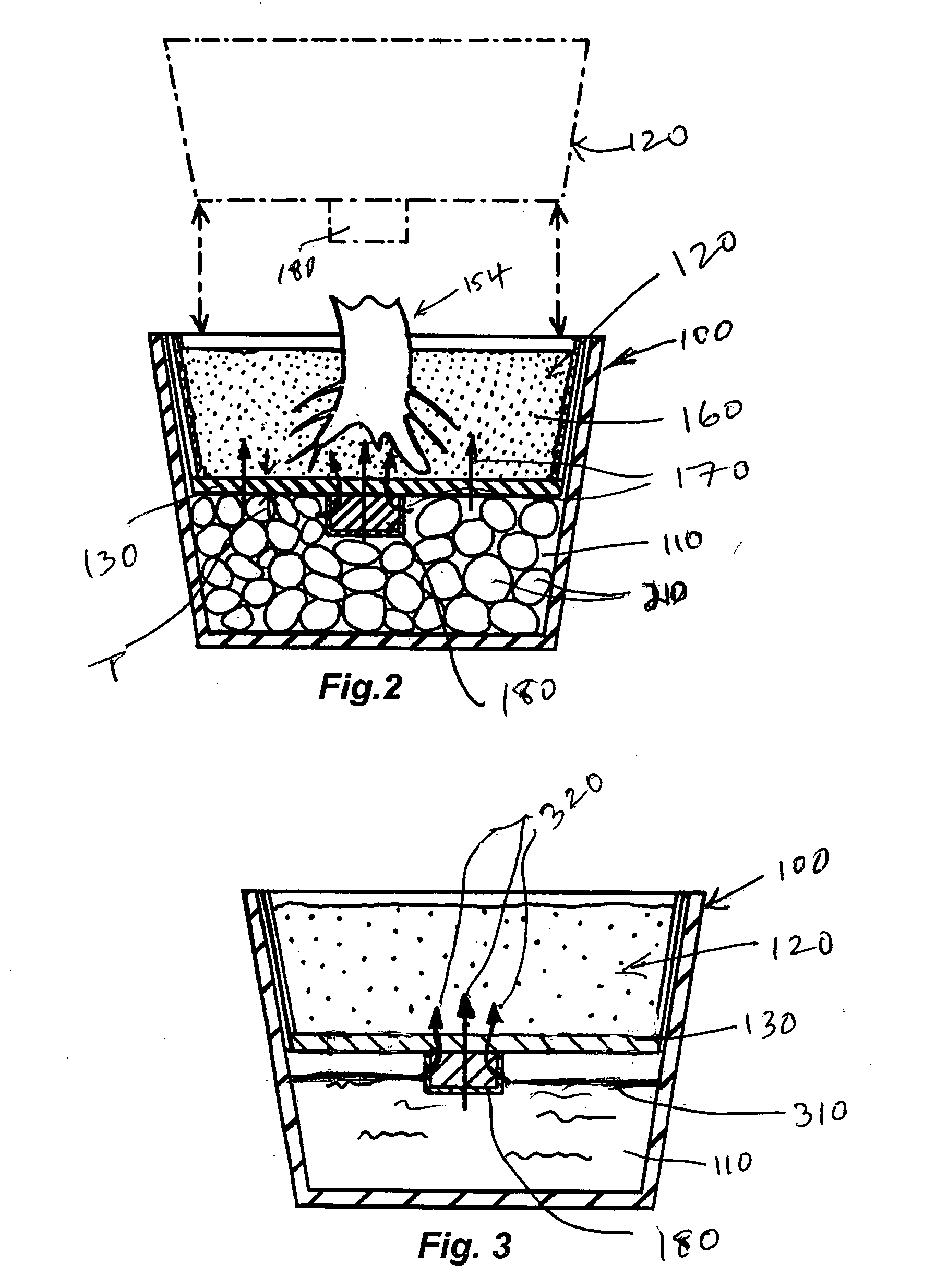System and method for promoting growth of multiple root systems in a hydroponic environment
a technology of hydroponic environment and root system, applied in the field of hydroponics, can solve the problems of excessive microbial activity within, difficult to dispose, harming plants or otherwise polluting the water environment, etc., and achieve the effect of reducing the effect of additional elements or processes
- Summary
- Abstract
- Description
- Claims
- Application Information
AI Technical Summary
Benefits of technology
Problems solved by technology
Method used
Image
Examples
Embodiment Construction
A. General Considerations
[0030]FIG. 1 shows an exemplary container system 100 used for promoting multiple (dual, in this embodiment) root systems in plants according to an illustrative embodiment of this invention. The container system 100 includes an outer container body 102 that can be any acceptable shape or size. In one example, this body is a square, tapered four-inch by four-inch box with a closed bottom side 104 and a fully open top side 106, as shown. However, the outer container can have an oblong-rectangular, ovular or circular footprint, among other shapes, in alternate embodiments. The lower (or “secondary”) section 110 of the container may be non-porous, and thereby adapted to retain non-nutrient water up to a predetermined level. As will be described below, the prevailing level of water in the lower section 110 is variable, and depends upon the overall arrangement of the container according to various embodiments described herein. By way of example, this container syst...
PUM
 Login to View More
Login to View More Abstract
Description
Claims
Application Information
 Login to View More
Login to View More - R&D
- Intellectual Property
- Life Sciences
- Materials
- Tech Scout
- Unparalleled Data Quality
- Higher Quality Content
- 60% Fewer Hallucinations
Browse by: Latest US Patents, China's latest patents, Technical Efficacy Thesaurus, Application Domain, Technology Topic, Popular Technical Reports.
© 2025 PatSnap. All rights reserved.Legal|Privacy policy|Modern Slavery Act Transparency Statement|Sitemap|About US| Contact US: help@patsnap.com



